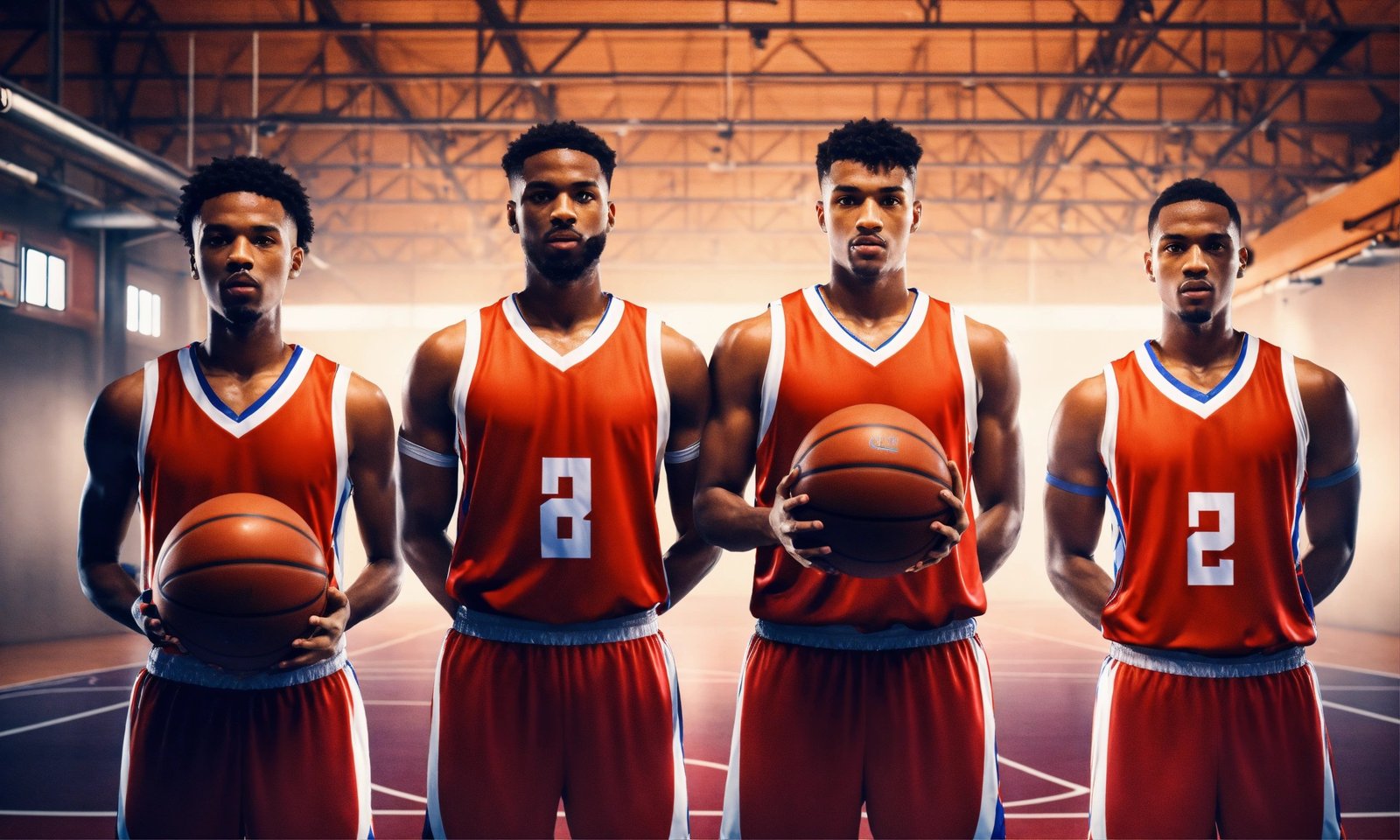College basketball captivates fans across the United States with its high-energy gameplay and thrilling moments. One question that often arises among spectators and newcomers alike is: how long is a college basketball game? Understanding the duration of these games is crucial for fans planning their viewing experience and for players preparing for the physical demands of the sport.
This comprehensive guide delves into the intricacies of college basketball game length. It explores the evolution of game duration over time, strategies coaches use to manage the clock, and how game length impacts the fan experience. Additionally, it compares college basketball game times to those of other levels, such as high school and NBA games, to provide a broader perspective on basketball timekeeping across different leagues.
Evolution of College Basketball Game Length
Historical Changes
College basketball has undergone significant changes since its inception in 1891. Dr. James Naismith, the creator of basketball, originally designed the game to be played in two 15-minute halves. In 1905, the NCAA adopted a new format, extending the game to two 20-minute halves. This change marked the beginning of a series of adjustments to the game’s duration and structure.
In 1951, both the NBA and NCAA briefly experimented with four 10-minute quarters. However, in 1954, while the NBA opted to keep the quarter system and extend each quarter to 12 minutes, the NCAA decided to revert to the two 20-minute halves format. This decision has shaped college basketball as we know it today.
Current NCAA Regulations
Under current NCAA regulations, men’s college basketball games consist of two 20-minute halves, totaling 40 minutes of playing time. Women’s games, however, are played in four 10-minute quarters, a change implemented in 2015 to enhance the game’s flow. Halftime breaks typically last 15 minutes but can extend to 20 minutes for special ceremonies or performances.
The average college basketball game runs for about two hours, though this can vary based on several factors. Each team has four timeouts – one 60-second timeout and three 30-second timeouts – for regulation play. In televised games, there are eight TV timeouts, four in each half, occurring at the first dead ball after the 16-minute, 12-minute, 8-minute, and 4-minute marks.
Potential Future Adjustments
The NCAA continues to evaluate and implement rule changes to improve the game. Recent adjustments include modifying the shot clock duration and revising foul rules. In 2015, the shot clock was reduced from 35 seconds to 30 seconds to increase the pace of play. The NCAA has also considered introducing “quasi-quarters” by resetting team fouls at the 10-minute mark of each half, which could affect game duration and flow.
Strategies for Managing Game Time
Coaching Tactics
Effective time management is crucial in college basketball games. Coaches employ various strategies to maximize their team’s performance within the game’s duration. One common approach involves utilizing pre-game warm-ups as mini-fundamental practices. This technique allows coaches to squeeze in additional practice time, focusing on essential skills like shooting fundamentals, defensive positioning, and passing drills. By treating warm-ups as practice sessions, coaches can effectively use the 20 minutes before each game to reinforce key concepts and improve player performance.
Player Substitutions
Player substitution is a critical aspect of game time management. Coaches must balance keeping players fresh with allowing them to develop a rhythm. Some coaches, like Ben McCollum at Northwest Missouri State University, prefer to play their best players for extended periods, often averaging over 30 minutes per game. This approach can be effective, especially when winning is the top priority. Conversely, other coaches opt for frequent rotations, using short stints to wear down opponents and maintain a high-energy playing style. This strategy can be particularly useful for teams that employ full-court pressure or have a relatively even distribution of talent across the roster.
End-of-Game Scenarios
Managing end-of-game situations requires careful planning and execution. Coaches often prepare specific plays and strategies for various scenarios, such as being up or down by a certain number of points with limited time remaining. It’s crucial for players to be aware of the time, score, and situation at all times. Coaches may call timeouts to calm players, reinforce strategies, or make defensive changes. However, excessive timeouts and replay reviews can slow down the game’s pace, potentially affecting the fan experience. Some coaches advocate for adopting international rules, such as abolishing live-ball timeouts, to maintain game flow and force players to make decisions under pressure.
Fan Experience and Game Duration
In-Stadium Entertainment
College basketball games offer more than just on-court action. During stoppages in play, teams implement various activities to drive fan engagement and increase revenue. Cheerleaders and mascots play a crucial role, not only entertaining the crowd but also conducting sponsored activities involving fans. A popular example is the sponsored fan half-court shot, where spectators attempt to make a shot from half-court for a chance to win prizes supplied by sponsors. Another innovative approach is the use of airdrops, where mini parachutes carrying sponsored gifts and QR codes for discounts descend upon the crowd, creating excitement and promotional opportunities.
TV Viewing Considerations
Television has transformed the way fans experience college basketball games. The right TV can elevate the viewing experience significantly. 4K Ultra HD TVs, with their superior resolution, capture every fast break and buzzer-beater in stunning clarity. A high refresh rate, ideally 120Hz, minimizes motion blur, making the action smoother and more exciting. Sound quality is equally important, with good speakers or sound systems recreating the arena’s atmosphere at home. High Dynamic Range (HDR) technology enhances color and contrast, making team colors more vibrant and the overall picture more realistic.
Impact on Student-Athletes
The duration and frequency of college basketball games have a significant impact on student-athletes. NCAA regulations limit athletically related activities to a maximum of four hours per day and 20 hours per week during the season, with one day off. However, many student-athletes feel overworked, while coaches, under pressure to win, often push for more practice time. This conflict affects athletes’ academic pursuits and overall college experience. To address this, there’s growing support for measures such as mandatory breaks between practices, in-season breaks from games and practices, and limiting sports-related activities during exam periods.
Conclusion
College basketball games offer a thrilling experience that goes beyond the 40 minutes of play time. The evolution of game length, coaching strategies, and fan engagement have all played a part in shaping the modern college basketball experience. From the historical changes in game structure to the current regulations and potential future adjustments, the sport continues to adapt to enhance both player performance and spectator enjoyment.
The impact of game duration extends far beyond the court. It has an influence on coaching tactics, player substitutions, and end-game scenarios, all of which contribute to the excitement of each match. Additionally, the length of games affects the fan experience, both in-stadium and for TV viewers, as well as the lives of student-athletes. As college basketball continues to evolve, finding the right balance between these factors will be crucial to maintain the sport’s popularity and ensure its long-term success.
FAQs
1. What is the duration of a standard men’s college basketball game?
Men’s college basketball games consist of 40 minutes of actual play, divided into two halves of 20 minutes each. However, the total duration typically extends to about two hours when including timeouts, video reviews, fouls, and any potential overtime.
2. What is the typical length of a basketball game including potential delays?
The duration of a basketball game can vary, especially with factors like overtime, which might add an additional 5 to 15 minutes depending on the format. On average, a game lasts about two hours.
3. How long does a regulation college football game last?
The average duration of a college football game is approximately 3 hours and 22 minutes. This is an increase from previous years, reflecting changes in game dynamics and rules.
4. How is the game time structured in women’s college basketball?
Women’s college basketball games are structured differently from men’s, with the game divided into four quarters of 10 minutes each. The halftime break typically lasts 15 minutes, though it can extend up to 20 minutes during special events or performances.
























+ There are no comments
Add yours